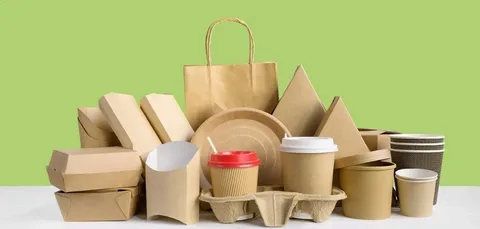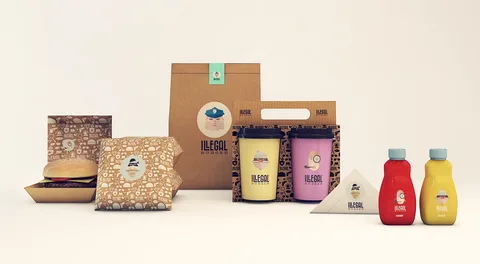In the realm of packaging, innovation and practicality must go hand in hand to meet the diverse needs of modern consumers. One packaging format that
In the realm of packaging, innovation and practicality must go hand in hand to meet the diverse needs of modern consumers. One packaging format that continues to gain prominence due to its blend of functionality, convenience, and protection is tubed packaged goods. From personal care to pharmaceuticals and food products, tubes serve as a smart packaging solution that improves user experience while maintaining product integrity.
This article delves into the multifaceted world of tubed packaged goods, highlighting their types, advantages, applications, manufacturing materials, recent trends, and challenges. It also includes an FAQ section for common questions, offering a comprehensive guide to this ever-important packaging form.
What Are Tubed Packaged Goods?
Tubed packaged goods are products enclosed in a cylindrical or slightly tapered container made of flexible or semi-rigid material. These tubes are designed to be squeezed, allowing the user to dispense the product inside with precision and minimal waste. The packaging typically includes a sealed end and a nozzle fitted with a cap or closure for protection.
Such packaging is predominantly used for viscous or paste-like products, where portion control and hygiene are crucial.
Advantages of Tubed Packaging
1. Controlled Dispensing
The squeeze-tube mechanism offers users precise control over the amount of product dispensed, reducing wastage and mess. This is especially useful for skincare creams, ointments, and adhesives.
2. Portability and Convenience
Tubed goods are compact and lightweight, making them easy to carry, store, and use on-the-go. Travel-sized tubes have become a staple for toiletries and cosmetics.
3. Protection and Preservation
Sealed tubes protect products from exposure to air, light, and contaminants, thereby extending shelf life and preserving product efficacy.
4. Cost-Effective Production
Compared to rigid packaging, tubes are less expensive to manufacture and ship due to their lightweight and flexible design.
5. Hygiene
By minimizing direct contact with the product, tubes help maintain hygiene and reduce the risk of contamination.

Materials Used for Tubed Packaged Goods
Plastic Tubes
Plastic tubes made from polyethylene (PE) or polypropylene (PP) are highly flexible, durable, and affordable. They are ideal for cosmetics, personal care products, and certain food items.
Aluminum Tubes
Aluminum tubes provide excellent barrier properties against moisture, light, and oxygen, making them suitable for pharmaceuticals and sensitive cosmetics. They are recyclable but less flexible than plastic tubes.
Laminated Tubes
Laminated tubes combine layers of plastic and aluminum foil, offering a compromise between flexibility and protection. They are often used in cosmetics and pharmaceutical packaging where product safety is paramount.
Common Applications of Tubed Packaged Goods
Cosmetics and Personal Care
Products like lotions, creams, gels, sunscreens, and hair care products commonly use tube packaging. The hygiene and ease of application make tubes particularly popular for these products.
Food and Condiments
Ketchup, mustard, mayonnaise, and other sauces are often packed in tubes for convenient dispensing and portion control. Tubes also appear in bakery products such as icing and decorative gels.
Pharmaceutical Products
Topical medications including ointments, creams, and gels benefit from tubed packaging as it helps maintain sterility and dosage accuracy.
Industrial Use
Adhesives, sealants, and other chemical products are packaged in tubes to facilitate controlled application and minimize waste.
Innovations and Emerging Trends
Sustainability Initiatives
The packaging industry is embracing eco-friendly materials, including recyclable plastics and biodegradable laminates. Mono-material tubes are designed to improve recyclability without compromising barrier performance.
Smart Packaging
Innovations such as airless tubes, tamper-evident caps, and portion-control designs are improving product preservation and user safety.
Aesthetic and Functional Customization
Brands are leveraging advanced printing techniques, textures, and shapes to create visually appealing tubes that also enhance grip and usability.
Refillable Tubes
To curb plastic waste, refillable and reusable tube designs are gaining traction, especially in beauty and skincare sectors.
Challenges Facing Tubed Packaging
- Recycling Complexity: Multi-layer tubes, while protective, are difficult to recycle due to their composite structure.
- Compatibility Issues: Some products may interact chemically with tube materials, requiring specialized linings.
- Production Costs: High-barrier and custom-printed tubes can be expensive to manufacture.
FAQs on Tubed Packaged Goods
Q1: What types of products are best suited for tubes?
A: Products with thick, paste-like consistency, such as creams, gels, adhesives, and food pastes, are ideal for tube packaging due to ease of controlled dispensing.
Q2: Are tubed packages recyclable?
A: Single-material plastic and aluminum tubes are recyclable, but multilayer laminated tubes present recycling challenges. New mono-material tubes aim to solve this issue.
Q3: How do tubes help maintain product freshness?
A: Tubes minimize exposure to air, moisture, and contaminants, protecting the product and preserving its active ingredients for longer.
Q4: Can tubes be resealed?
A: Yes. Tubes usually have screw-on or flip-top caps that allow resealing to maintain product integrity between uses.
Q5: What are airless tubes?
A: Airless tubes use a vacuum mechanism to dispense product without letting air back in, greatly extending shelf life and preserving sensitive products.
Q6: How can I recycle a tube with leftover product?
A: It is best to squeeze out as much product as possible and rinse the tube if recommended by local recycling guidelines before disposal.
Q7: Are aluminum tubes better than plastic?
A: Aluminum tubes provide superior barrier protection but are less flexible and can be more costly. Plastic tubes offer flexibility and lightness, favored for many everyday products.
Conclusion
Tubed packaged goods represent a highly effective packaging format that continues to meet the evolving needs of consumers and manufacturers alike. Their ability to combine ease of use, product protection, portability, and branding flexibility has cemented their place across a wide range of industries.
As sustainability becomes a central concern, the packaging industry is innovating with materials and designs that reduce environmental impact while maintaining the functional benefits of tubed packaging. Whether you’re using your daily toothpaste or a specialty pharmaceutical ointment, the tube’s thoughtful design delivers convenience and protection every step of the way.
The future of tubed packaged goods looks bright, with ongoing advancements promising smarter, greener, and more user-friendly solutions that enhance both product experience and environmental responsibility.
For More Info: infromednation




COMMENTS